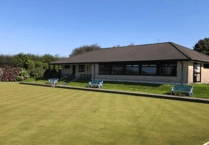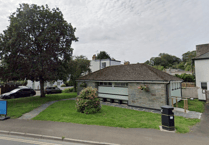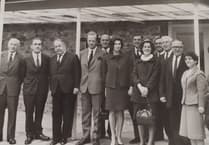A PUBLIC exhibition of proposals for 39 new homes at Higher Cross Lane, Camelford, gave local residents an insight into potentially more developments in the town.
Starting at 3.30pm on Wednesday, May 10 at the Old Bank in Camelford, swarms of people were already gathered around the tables, with the plans laid out across them.
The proposals, put forward by planning and development consultants, Bell Cornwell, with designs by Bude’s Bazeley Partnership, are for a new housing site at Higher Cross Lane, Tregoodwell.
The Post spoke to a representative from Bell Cornwell, whose offices are based in Exeter, who went into detail about the proposals.
The plans include the development of 39 houses, with a small percentage of that being affordable housing to fit in with government policies. The dwellings will be a mixture of one, two, three and four-bed homes, with the majority being three to four-bed family homes, offering a mixture to different target markets.
He said: “Another thing is we’re very conscious of the access points. There will also be an open space, large gardens; the overall density is very low.”
The plans also take into consideration the surrounding wildlife and ecology, including the hedgerows and a barn-style lot for bats.
The representative was very positive with the turnout of people so early on in the consultation event. He said: “It’s fantastic to see; we really want to make this part of Tregoodwell and the community — especially with the green space here, so it will be available to all of the residents.
“We’re looking to get feedback for the latest proposals; it’s a pre-application enquiry. We want to speak to residents to make sure we’re moving in the right direction.”
The houses will be larger, family-size dwellings, and, fitting with housing policies, will offer a range to appeal to families in particular.
Aaron Dawe, who lives within the town, was keen to ask about the meadowlands and if there would be any management for its upkeep. He was told that a company would be contacted, and given responsibility to look after the green space, trees and hedges, and the space’s overall upkeep. However, there would be an ‘allowance of responsibility’.
The green space was also discussed with the architect of the designs, Martin Back from the Bazeley Partnership.
It was made clear that the space would be a community-based area, and that further plans for this would be made in the near future. Regarding the space, Mr Dawe said: “I’d say (it should provide) something for the kids.”
He also suggested an allotment area, which was echoed by another resident, who explained that the existing allotments in town were difficult for some people to access, and that having allotments here would provide an opportunity for these people to access allotment spaces elsewhere.
Mr Back explained to the pair that the plans were designed to ‘not let the boundaries go to the back of the gardens’ and that they were keen to ‘hang on to the habitat’. The plans displayed a ‘huge, green stretch’ around the site, proving that a lot of consideration has gone into giving the wildlife and environment the chance to thrive.
In April, Wainhomes produced its plans for 104 new homes at Valley Truckle, which has seen a lot of opposition. A further discussion of this proposal was put forward at Camelford Town Council’s recent full council meeting.
However, looking at Bell Cornwell’s plans, a resident said: “It’s much better than what I anticipated.”
When mentioning the fact that Camelford is an air quality management area, and that some residents have shown concern at other housing consultations due to the amount of traffic and pollution that could be brought in with the introduction of new homes, Mr Back told the Post: “As you build more houses, you will get more cars, but you have to try and balance it out a bit.
“It is a tricky one, but with the air quality policy, the government measures and monitors it.”
The access was also discussed, and Mr Back said they were keen to improve the visibility and height of the hedges, of which has always been of concern to residents when trying to get onto the road from this particular area.
Ecology has also been an important factor in the planning process, and has a ‘huge net gain’.
Mr Back continued: “This exceeds what we’ve got on site, in terms of ecology and planting.”
When asked about the efficiency of the homes, Mr Back said that all homes have to be energy-efficient now. He said: “Take any new house, it has to work and it has to fit.”
He explained that air tightness is also very important in the design, and that the latest batch of homes have sustainable technology, including solar thermal panels and heated water that is cost-efficient.
Claire Hewlett, secretary of the neighbourhood plan steering group, told the Post that she is pleased with how responsive Bell Cornwell has been with the neighbourhood plan group.
She said: “We’ve been working closely with the developers. They have been very responsive; the density has dropped dramatically, and the amount of green space has gone up — which is always good.
“There are also bats on site. We have discussed street lighting, so the bats can fly and feed. I think we’ve worked very well together.”
Ms Hewlett, who is also chair of the Camelford Clean Air Group — who have been campaigning for better air quality and ensuring Camelford is a priority in terms of Cornwall Council’s Clean Air for Cornwall programme — said, regarding added pollution to the town: “Any new build is going to bring more traffic. It will have to come through the town, so it could have an effect on the pollution. There is a direct correlation between new houses, more traffic and air pollution.”




This article has no comments yet. Be the first to leave a comment.